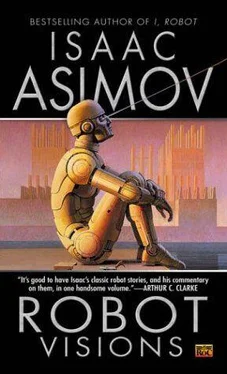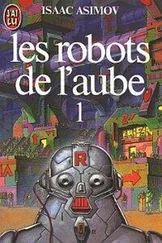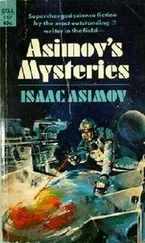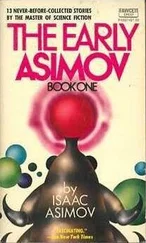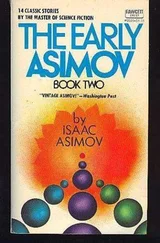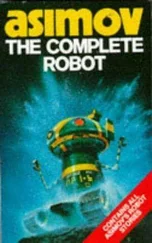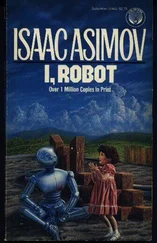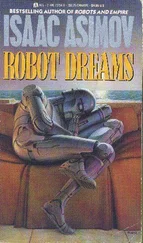Isaac Asimov - Robot Visions
Здесь есть возможность читать онлайн «Isaac Asimov - Robot Visions» весь текст электронной книги совершенно бесплатно (целиком полную версию без сокращений). В некоторых случаях можно слушать аудио, скачать через торрент в формате fb2 и присутствует краткое содержание. Жанр: Фантастика и фэнтези, на английском языке. Описание произведения, (предисловие) а так же отзывы посетителей доступны на портале библиотеки ЛибКат.
- Название:Robot Visions
- Автор:
- Жанр:
- Год:неизвестен
- ISBN:нет данных
- Рейтинг книги:5 / 5. Голосов: 1
-
Избранное:Добавить в избранное
- Отзывы:
-
Ваша оценка:
- 100
- 1
- 2
- 3
- 4
- 5
Robot Visions: краткое содержание, описание и аннотация
Предлагаем к чтению аннотацию, описание, краткое содержание или предисловие (зависит от того, что написал сам автор книги «Robot Visions»). Если вы не нашли необходимую информацию о книге — напишите в комментариях, мы постараемся отыскать её.
Robot Visions — читать онлайн бесплатно полную книгу (весь текст) целиком
Ниже представлен текст книги, разбитый по страницам. Система сохранения места последней прочитанной страницы, позволяет с удобством читать онлайн бесплатно книгу «Robot Visions», без необходимости каждый раз заново искать на чём Вы остановились. Поставьте закладку, и сможете в любой момент перейти на страницу, на которой закончили чтение.
Интервал:
Закладка:
My robot stories and novels seem to have become classics in their own right and, with the advent of the “Robot City” series of novels, have become the wider literary universe of other writers as well. Under those circumstances, it might be useful to go over my robot stories and describe some of those which I think are particularly significant and to explain why I think they are.
1. “Robbie:” This is the first robot story I wrote. I turned it out between May 10 and May 22 of 1939, when I was nineteen years old and was just about to graduate from college. I had a little trouble placing it, for John Campbell rejected it and so did Amazing Stories. However, Fred Pohl accepted it on March 25, 1940, and it appeared in the September 1940 issue of Super Science Stories, which he edited. Fred Pohl, being Fred Pohl, changed the title to “Strange Playfellow,” but I changed it back when I included it in my book I, Robot and it has appeared as “Robbie” in every subsequent incarnation.
Aside from being my first robot story, “Robbie” is significant because in it, George Weston says to his wife in defense of a robot that is fulfilling the role of nursemaid, “He just can’t help being faithful and loving and kind. He’s a machine-made so.” This is the first indication, in my first story, of what eventually became the “First Law of Robotics,” and of the basic fact that robots were made with built-in safety rules.
2. “Reason:” “Robbie” would have meant nothing in itself if I had written no more robot stories, particularly since it appeared in one of the minor magazines. However, I wrote a second robot story, “Reason,” and that one John Campbell liked. After a bit of revision, it appeared in the April 1941 issue of Astounding Science Fiction, and there it attracted notice. Readers became aware that there was such a thing as the “positronic robots,” and so did Campbell. That made everything afterward possible.
3. “Liar!:” In the very next issue of Astounding, that of May 1941, my third robot story, “Liar!” appeared. The importance of this story was that it introduced Susan Calvin, who became the central character in my early robot stories. This story was originally rather clumsily done, largely because it dealt with the relationship between the sexes at a time when I had not yet had my first date with a young lady. Fortunately, I’m a quick learner, and it is one story in which I made significant changes before allowing it to appear in I, Robot.
4. “Runaround:” The next important robot story appeared in the March 1942 issue of Astounding. It was the first story in which I listed the Three Laws of Robotics explicitly instead of making them implicit. In it, I have one character, Gregory Powell, say to another, Michael Donovan, “Now, look, let’s start with the Three Fundamental Rules of Robotics-the three rules that are built most deeply into a robot’s positronic brain.” He then recites them.
Later on, I called them the Laws of Robotics, and their importance to me was threefold:
a) They guided me in forming my plots and made it possible to write many short stories, as well as several novels, based on robots. In these, I constantly studied the consequences of the Three Laws.
b) It was by all odds my most famous literary invention, quoted in season and out by others. If all I have written is someday to be forgotten, the Three Laws of Robotics will surely be the last to go.
c) The passage in “Runaround” quoted above happens to be the very first time the word “robotics” was used in print in the English language. I am therefore credited, as I have said, with the invention of that word (as well as of “robotic,” “positronic,” and “psychohistory”) by the Oxford English Dictionary, which takes the trouble-and the space-to quote the Three Laws. (All these things were created by my twenty-second birthday and I seem to have created nothing since, which gives rise to grievous thoughts within me.)
5. “Evidence:” This was the one and only story I wrote while I spent eight months and twenty-six days in the Army. At one point I persuaded a kindly librarian to let me remain in the locked library over lunch so that I could work on the story.It is the first story in which I made use of a humanoid robot. Stephen Byerley, the humanoid robot in question (though in the story I don’t make it absolutely clear whether he is a robot or not), represents my first approach toward R. Daneel Olivaw, the humaniform robot who appears in a number of my novels. “Evidence” appeared in the September 1946 issue of Astounding Science Fiction.
6. “Little Lost Robot:” My robots tend to be benign entities. In fact, as the stories progressed, they gradually gained in moral and ethical qualities until they far surpassed human beings and, in the case of Daneel, approached the god-like. Nevertheless, I had no intention of limiting myself to robots as saviors. I followed wherever the wild winds of my imagination led me, and I was quite capable of seeing the uncomfortable sides of the robot phenomena.
It was only a few weeks ago (as I write this) that I received a letter from a reader who scolded me because, in a robot story of mine that had just been published, I showed the dangerous side of robots. He accused me of a failure of nerve.
That he was wrong is shown by “Little Lost Robot” in which a robot is the villain, even though it appeared nearly half a century ago. The seamy side of robots is not the result of a failure in nerve that comes of my advancing age and decrepitude. It has been a constant concern of mine all through my career.
7. “The Evitable Conflict:” This was a sequel to “Evidence” and appeared in the June 1950 issue of Astounding. It was the first story I wrote that dealt primarily with computers (I called them “Machines” in the story) rather than with robots per se. The difference is not a great one. You might define a robot as a “computerized machine” or as a “mobile computer. “ You might consider a computer as an “immobile robot.” In any case, I clearly did not distinguish between the two, and although the Machines, which don’t make an actual physical appearance in the story, are clearly computers, I included the story, without hesitation, in my robot collection, I, Robot, and neither the publisher nor the readers objected. To be sure, Stephen Byerley is in the story, but the question of his roboticity plays no role.
8. “Franchise:” This was the first story in which I dealt with computers as computers, and I had no thought in mind of their being robots. It appeared in the August 1955 issue of It Worlds of Science Fiction, and by that time I had grown familiar with the existence of computers. My computer is “Multivac,” designed as an obviously larger and more complex version of the actually existing “Univac. “ In this story, and in some others of the period that dealt with Multivac, I described it as an enormously large machine, missing the chance of predicting the miniaturization and etherealization of computers.
9. “The Last Question:” My imagination didn’t betray me for long, however. In “The Last Question,” which appeared first in the November 1956 issue of Science Fiction Quarterly, I discussed the miniaturization and etherealization of computers and followed it through a trillion years of evolution (of both computer and man) to a logical conclusion that you will have to read the story to discover. It is, beyond question, my favorite among all the stories I have written in my career.
10. “The Feeling of Power: “The miniaturization of computers played a small role as a side issue in this story. It appeared in the February 1958 issue of If and is also one of my favorites. In this story I dealt with pocket computers, which were not to make their appearance in the marketplace until ten to fifteen years after the story appeared. Moreover, it was one of the stories in which I foresaw accurately a social implication of technological advance rather than the technological advance itself.
Читать дальшеИнтервал:
Закладка:
Похожие книги на «Robot Visions»
Представляем Вашему вниманию похожие книги на «Robot Visions» списком для выбора. Мы отобрали схожую по названию и смыслу литературу в надежде предоставить читателям больше вариантов отыскать новые, интересные, ещё непрочитанные произведения.
Обсуждение, отзывы о книге «Robot Visions» и просто собственные мнения читателей. Оставьте ваши комментарии, напишите, что Вы думаете о произведении, его смысле или главных героях. Укажите что конкретно понравилось, а что нет, и почему Вы так считаете.
